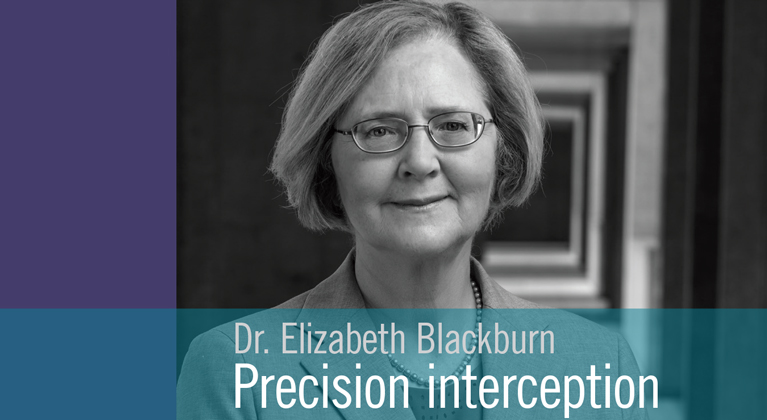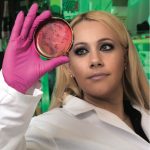For centuries medical professionals have been trained to react to disease with punishing force. When a bacterium or parasite or cancer manages to invade a patient’s body and inflict damage, these professionals wage an all-out war, often prescribing strong doses of broad-spectrum antibiotics or massive amounts of toxic chemicals to banish the invader. There is no doubt that these medical approaches transformed our world into one of longer life and less fear of disease. Their attendant negative side effects, however, can take such a toll on the patient that critics tend to mutter, “The treatment is worse than the disease.”
Now, scientific advances—a majority of them arising from foundational biological research—are offering us new perspectives and new strategies for dealing with diseases. Opposite from an all-out bombardment, these strategies employ targeted, customized and very effective treatments. Yet an even more dramatic difference is emerging from the older world of medicine, which was largely to react to a specific disease once it is clinically apparent: to attack the very roots of the disease. I call it “precision interception” and it’s opening an entirely new view on human healthcare. It is now possible to contemplate this as a reality, because the processes giving rise to serious and prolonged diseases such as cancers, diabetes and even neurological diseases are becoming better understood. We are now able to see how we can target a specific mechanism of a disease even before it takes hold, thus derailing its potency. Further aided by incredible genetic technologies and access to big data, we can tailor therapies to interface with a patient’s unique genetic makeup. We are even beginning to predict what the disease will do next. Truly, we are entering an astounding era for human health and longevity.
Salk science helped lay the groundwork for this new perspective years ago. In 1979, Tony Hunter began studying the Rous sarcoma virus, the first virus known to cause cancers. A surprising result from one experiment in his lab led to a seminal discovery: adding or subtracting phosphate molecules to the proteins, on an amino acid called tyrosine, could regulate cell activity. Controlling this process, Hunter realized, could prevent the sort of unregulated cell growth that often drives cancers. Fast forward a few decades to a remarkable outcome: the development of Gleevec, a groundbreaking drug that has turned chronic myelogenous leukemia from a fatal disease into a chronic, manageable disease. Gleevec led the way for a whole class of such targeted anticancer therapies. Tony’s discovery, just one in an illustrious career that has expanded our biological knowledge, has earned him worldwide recognition. And this past February, the Royal Swedish Academy of Sciences selected him to receive the prestigious Sjöberg Prize for Cancer Research.
By understanding the specific biology of a disease, we can point the way toward targeted—and thus more effective—treatments. Each human is unique, however. And unique genetic profiles comprised of elaborate molecular pathways and idiosyncratic mutations add layer upon layer of complexity to designing successful therapies. That means that a drug that works for one person doesn’t necessarily work for another. So scientists are turning to big data to fine-tune their insights.
Here at Salk, Ed Stites studies the complex behaviors of the molecular pathways and signaling networks implicated in cancers through the dual lenses of mathematical and computational models. The big data he produces not only reveals new understanding of how these networks promote cancer but also predicts how the specific cancers will respond to treatment. With this information in hand, doctors can more knowledgeably prescribe the most appropriate drugs for their patients. They can also better identify patients at high risk for certain cancers and suggest early intervention, while continuing to monitor those at a lower risk. Heading off diseases before they become intractable is a hallmark of precision interception.
In yet another twist on how to manage disease, Janelle Ayres is proposing that we shift from our combative strategy of trying to kill all harmful bacteria toward focusing on mitigating the damage they do to our bodies. In other words: learn to tolerate the enemy. Many invading harmful bacteria instruct our bodies to unwittingly unleash collateral damage, ranging from muscle wasting to multiple organ failure. But in precise studies with mice infected with harmful bacteria, Janelle discovered that helpful microbes leave their home in the gut and instruct the animals’ muscles to prevent wasting, thus mitigating damage. Her lab is now exploring ways to harness these beneficial microbes, trillions of which live inside our own bodies.
Having also discovered the exact cellular molecules of our bodies that the helpful bacteria instruct, Janelle is paving the way to inventing drugs that act on our own cells. Her investigations suggest that we may soon be able to boost the health-conferring abilities of beneficial microbes or possibly administer them as a “drug.”
At Salk, we continue apace to invest in basic, foundational science combined with state-of-the-art technology and big data analysis. I am convinced that this is the path to invaluable impacts on people’s lives. I foresee that the next decade or so will bring significant changes in the way we treat diseases, with added emphasis on intercepting and even preventing them. It’s a new perspective yet still perfectly aligned with Salk’s mission: Where cures begin.
![]()
Elizabeth Blackburn
President, Salk Institute
Irwin M. Jacobs Presidential Chair
























































